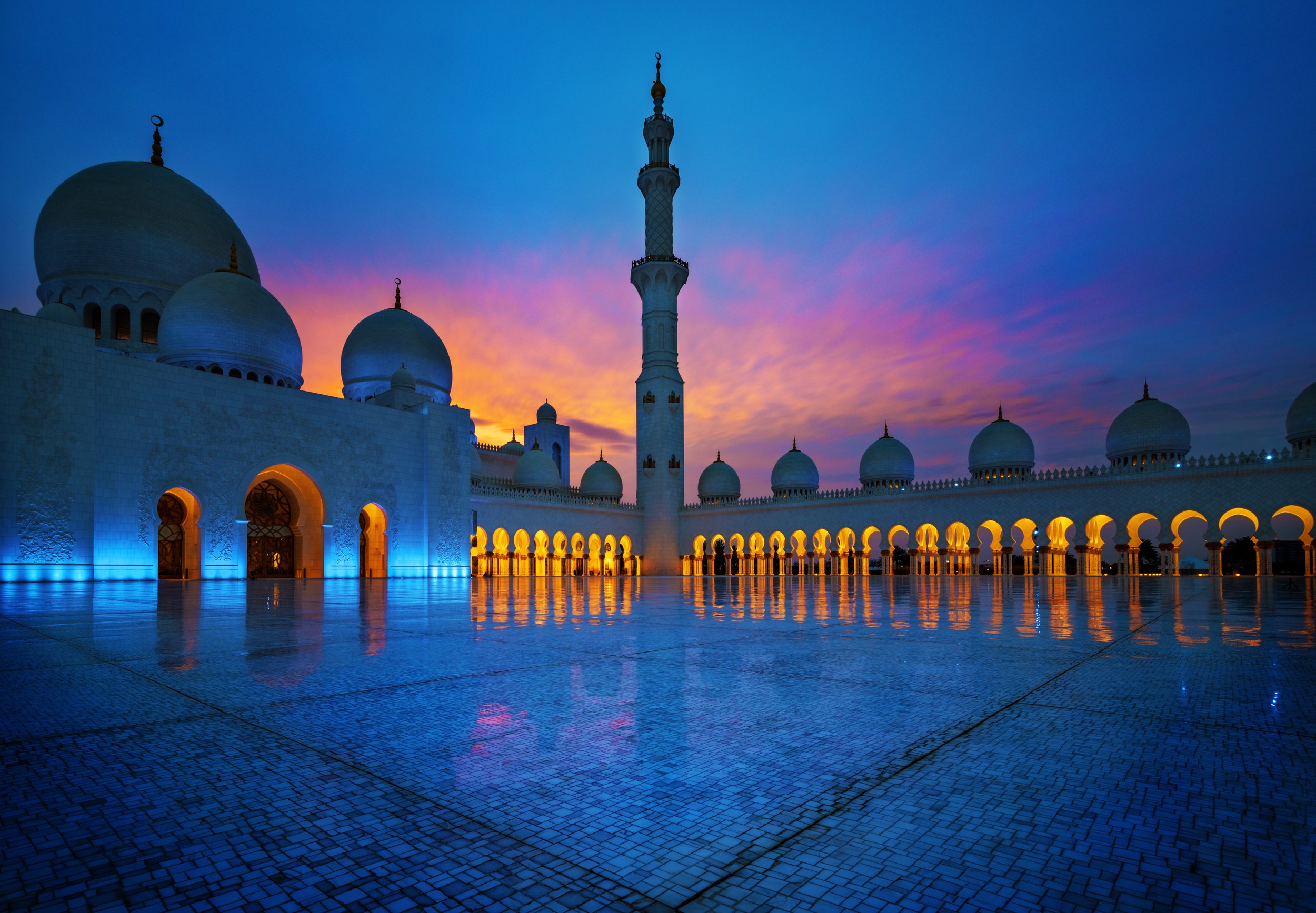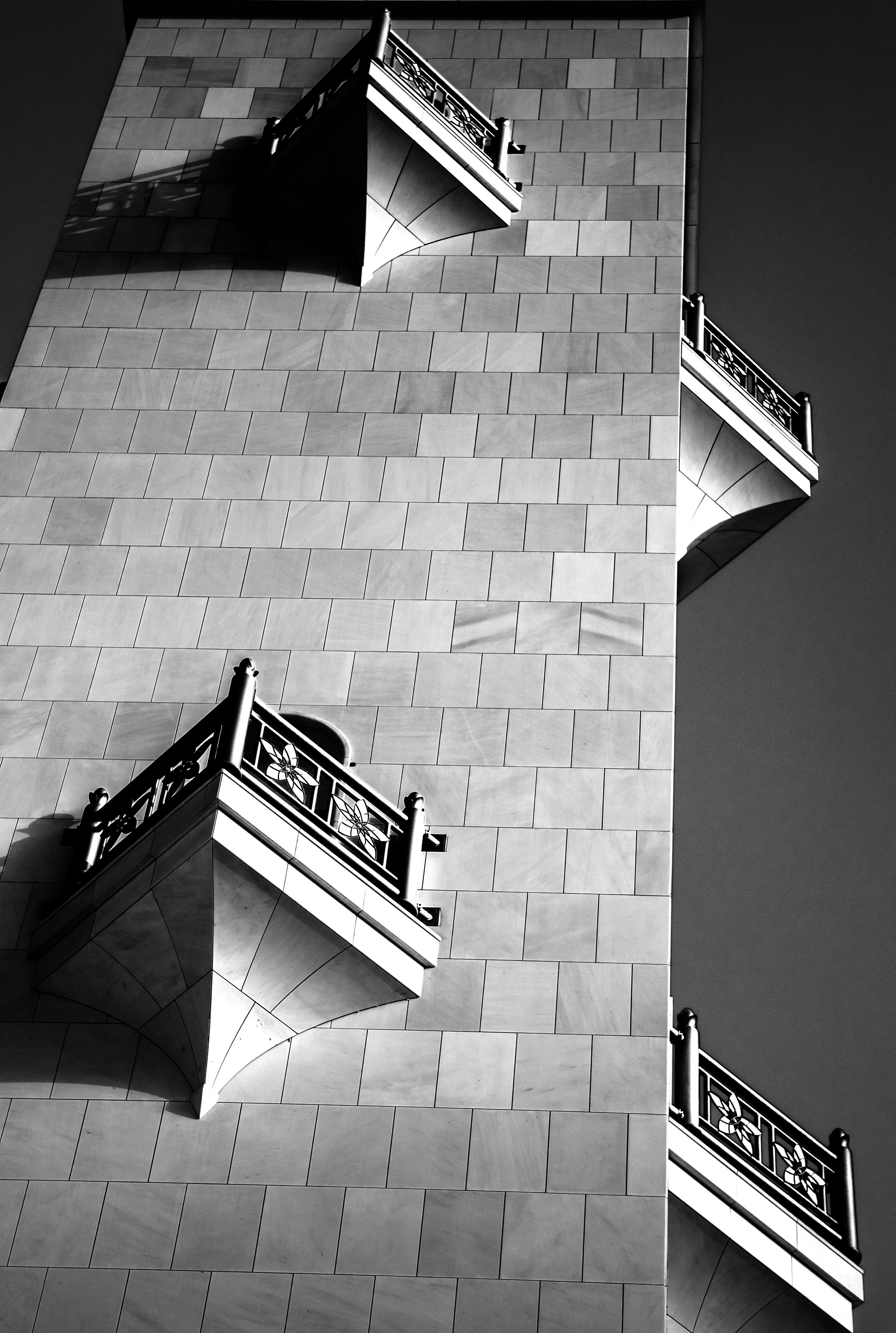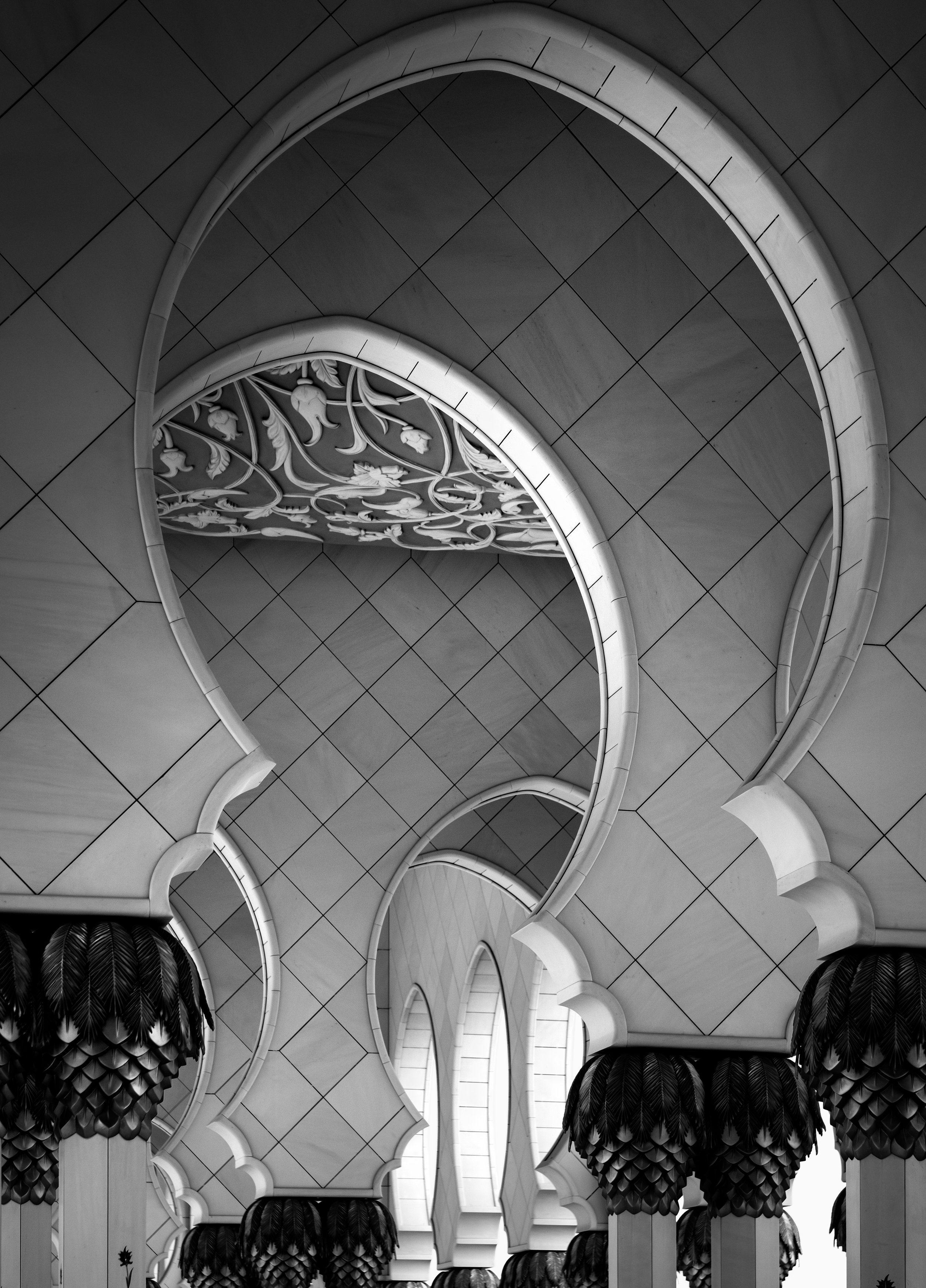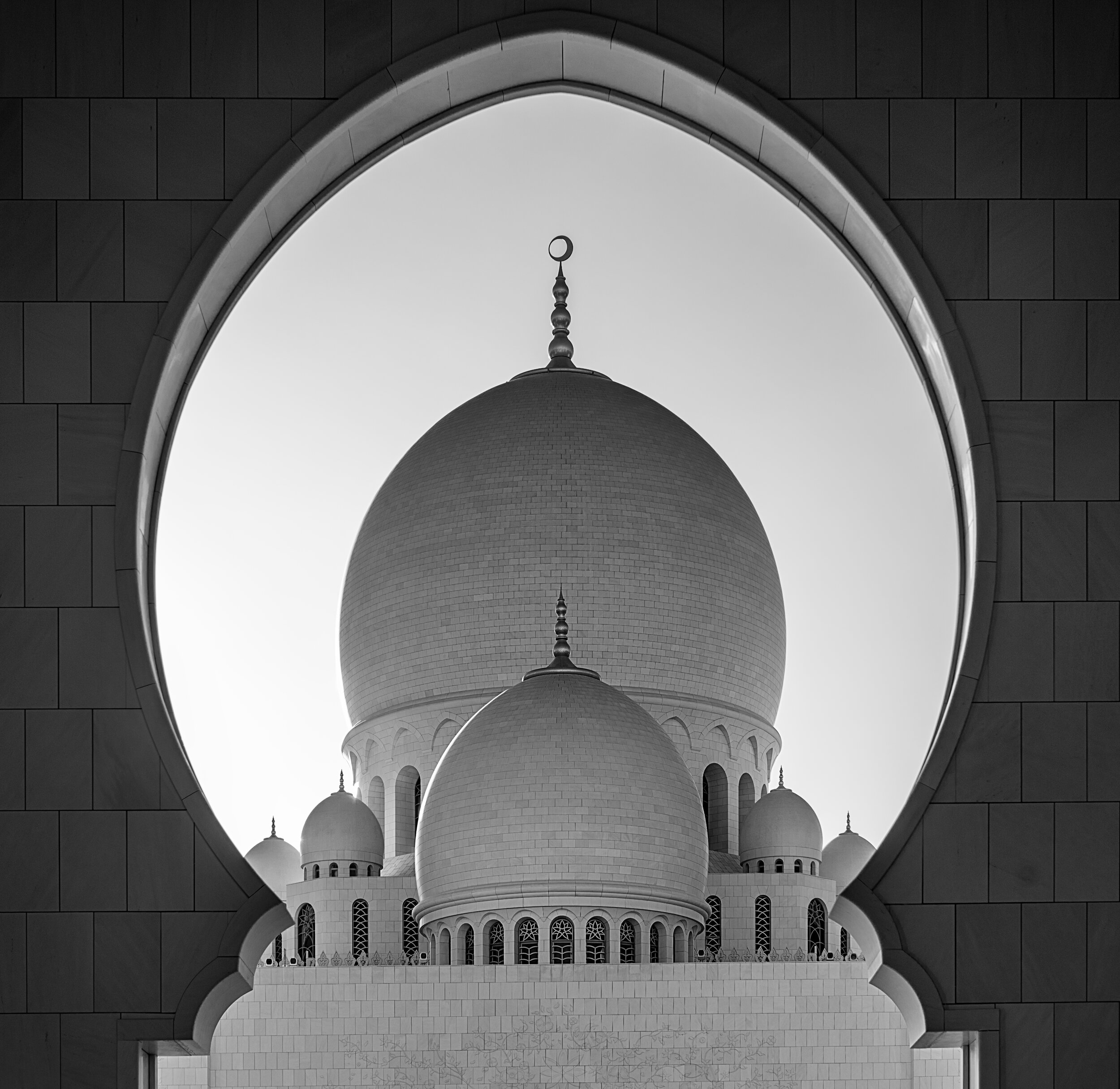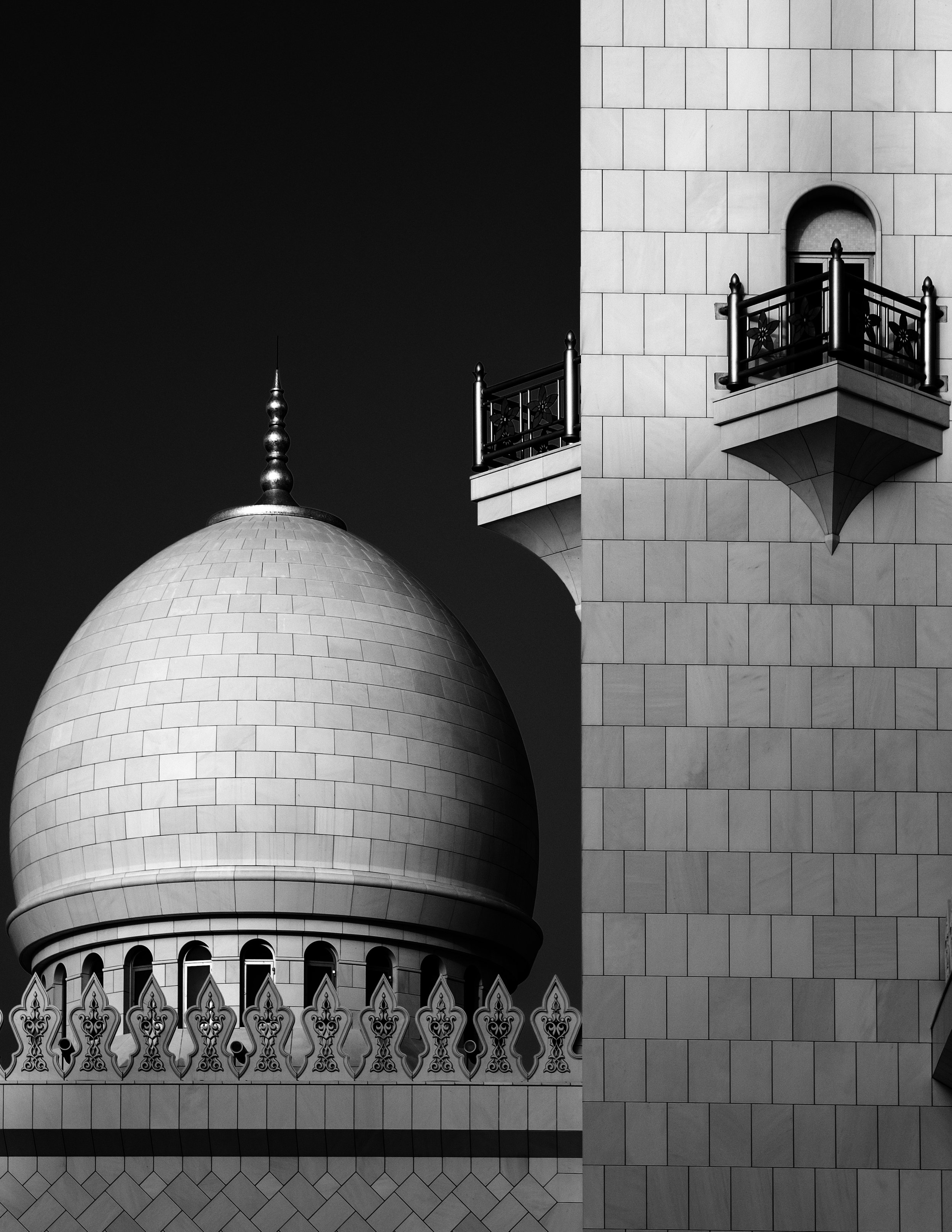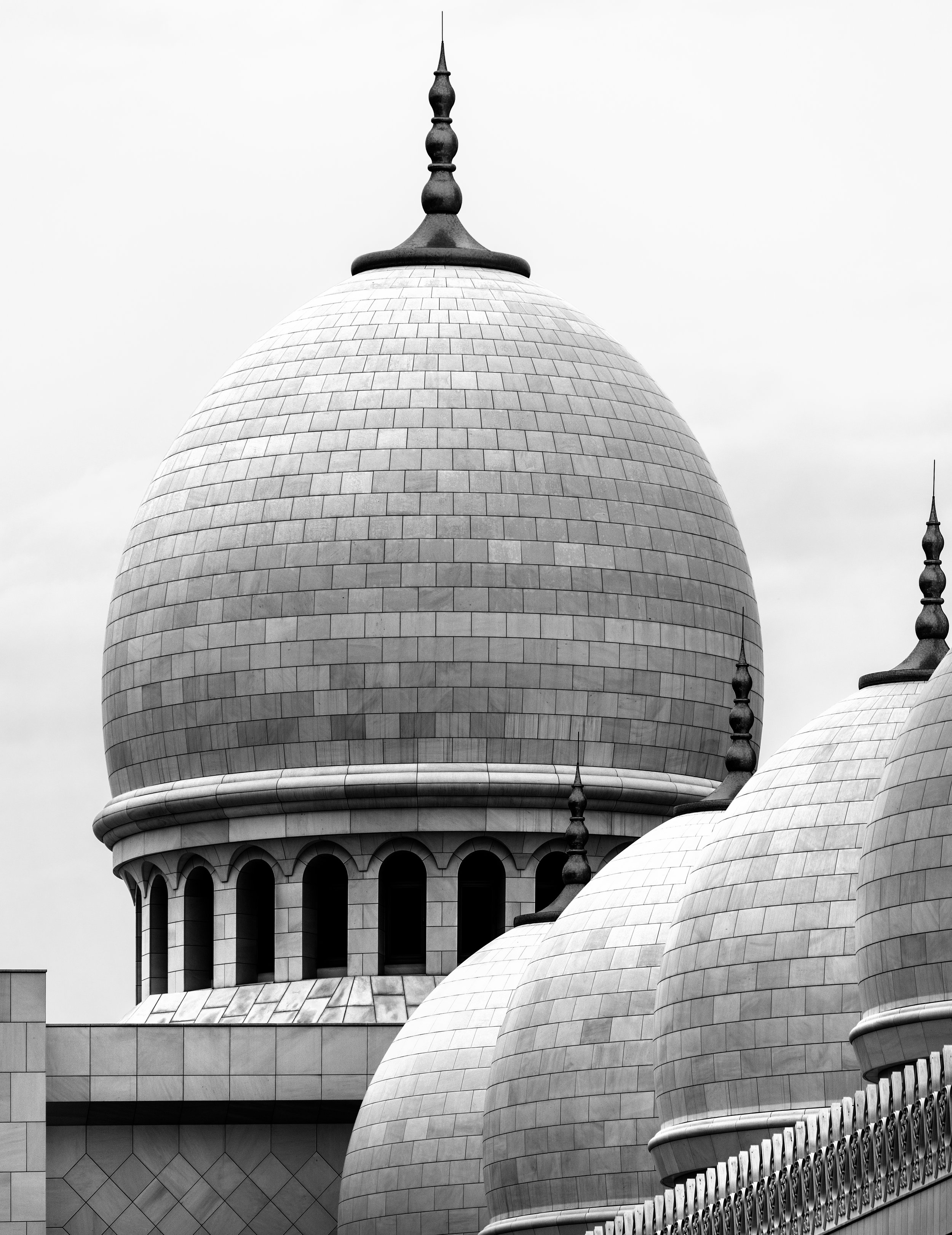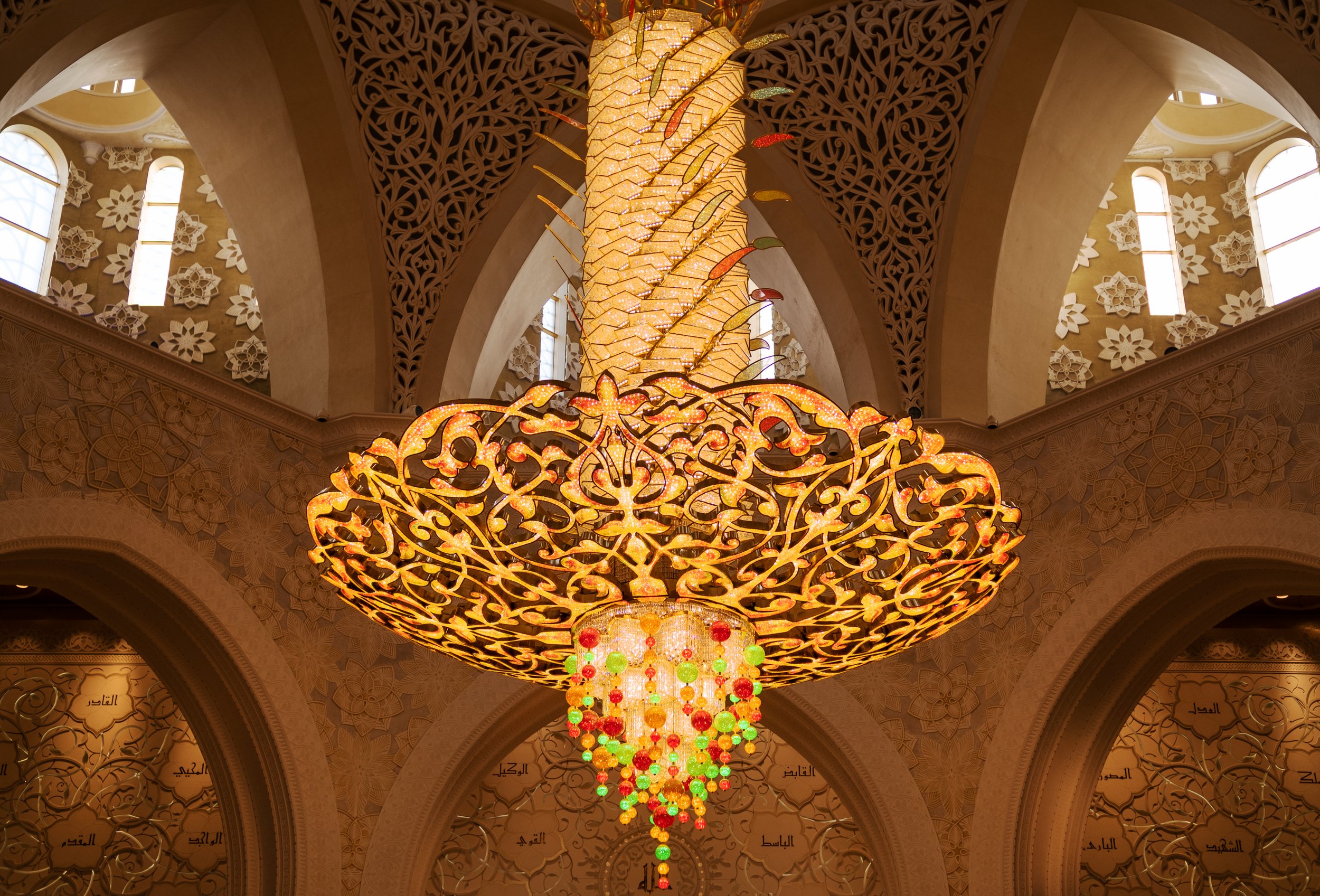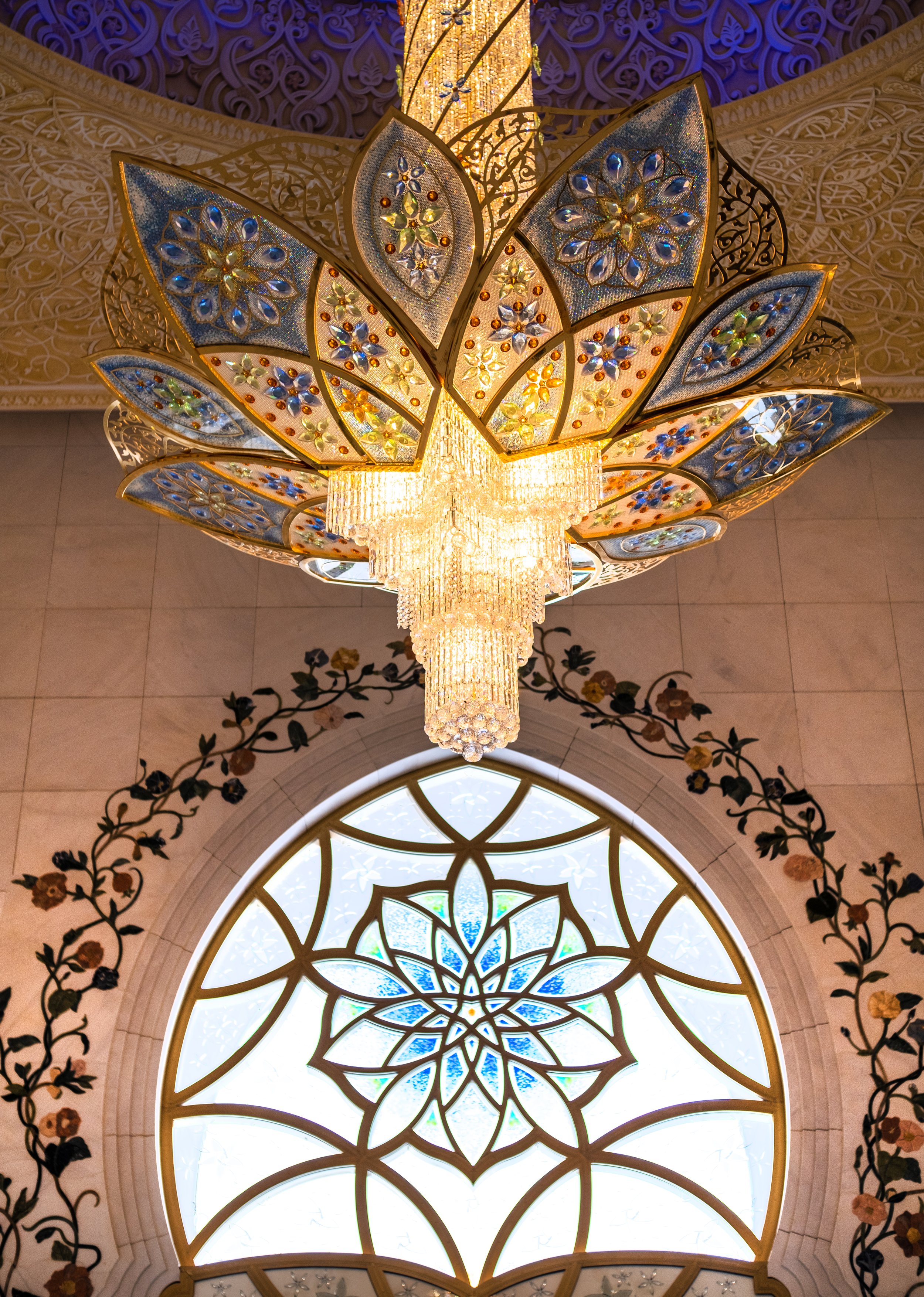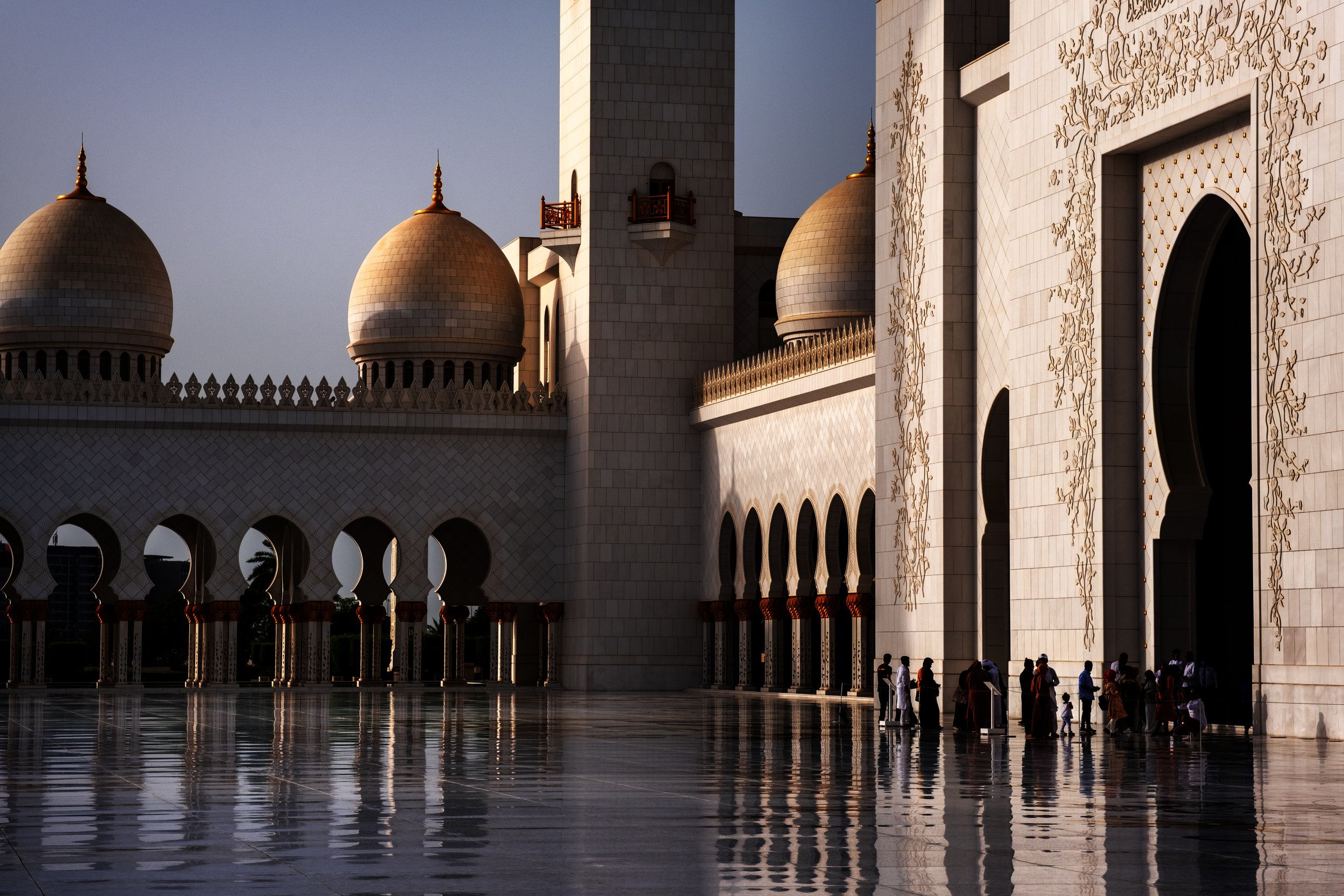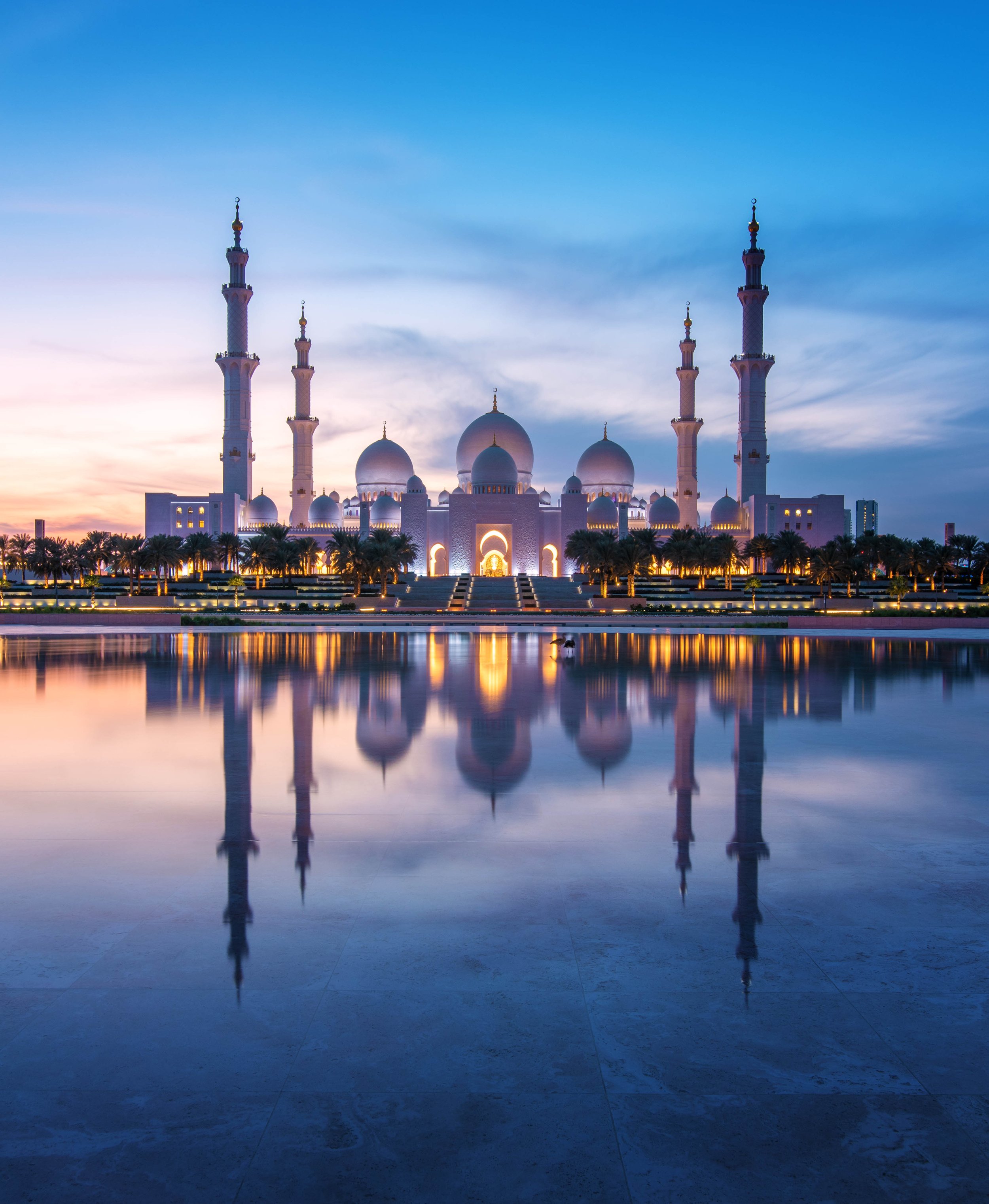Facts & Architectural Beauty Of The Iconic Sheikh Zayed Grand Mosque of Abu Dhabi
Learn interesting facts about the Architecture, history and beauty through amazing photos of Sheikh Zayed Grand Mosque of Abu Dhabi. For travellers and photographers interested in taking photos of the Sheikh Zayed Grand Mosque.
If you are coming to the United Arab Emirates, it is impossible if Sheikh Zayed Grand Mosque of Abu Dhabi is not on your bucket list. This architectural marvel, a place to worship and one of the most fascinating tourist spots has attracted at least 5 million visitors every year.
“In this blog, I am taking you to a virtual tour through some of my majestic photos of this beautiful holy place and crown jewel of the Emirate of Abu Dhabi”
On a personal level, I was always fascinated with Muslim Architecture. Coming from Pakistan, where you can see a few of the world’s biggest mosques, the inspiration to capture iconic shots of such marvelous sites was already there.
Every society has a strong influence from the religion its people are following which is represented in my ways and among those representations, architecture is an significant one, because it plays important role in showcasing their traditions, culture and sanctity of their values. In the same way Muslim Architecture has the stamp of many regions, which is mainly due to its vast geographical and historic boundaries. The true essence of such architectures being holy and sacred is there, but somehow every Muslim region and nation have added artistic looks to represent thier own versions. For instance, the majority of the Muslim architecture belongs to of course first Arabian region and then to Turkish or Ottoman, Persian and Mamluk dynasties. With time passing, these fascinating styles were then amalgamated into something very unique which is still followed by many newly build masterpieces, including Sheikh Zayed Grand Mosque.
To keep a count, if we start from the holy mosques of Mecca or Medina (Saudi Arabia) and holy mosque (Al Aqsa) of Jerusalem, the Sheikh Zayed Grand Mosque is among one of the largest in the world. One of the most visited tourist attractions in the world, it is located in the heart of Abu Dhabi, the capital of United Arab Emirates and was built to commemorate Sheikh Zayed bin Sultan Al Nahyan (may Allah rest his soul in peace), the founding father of the nation.
If you are thinking how huge this mosque is then let me add here that it was constructed between 1996 and 2007 and can accommodate up to 41,000 worshippers at any given time.
The building's design is of course based on Islamic architecture, which borrows elements from other notable styles including Persian, Fatimid, Mamluk and Turkish architecture. The building includes four minarets that are each more than 106 meters tall, at each of its corners along with a gigantic courtyard, a huge prayer hall, and a porch on its sides.
Hold on! Don’t forget that there are some very important requirements to enter in the Sheikh Zayed Grand Mosque. Women must be covered in a gown, covering their shoulders, arms till feet. The gown is provided at the mosque entrance by the administration. Men must be coverd too, below knees (at least) along with shoulders. These are etiquettes to enter a mosque in Islam. No matter who you are, you will be required to comply with these requirements.
For photographers, the maximum focal length in lenses you can carry inside the Sheikh Zayed Grand Mosque is 200mm. You are allowed to carry multiple camera bodies, lenses in a single bag along with a tripod but the use of tripod is totally depends on the ongoing/applicable restrictions in the mosque. If you are not complying with the rules, a security will approach you to stop any activity you are performing.
Let’s talk about some of distinguished features of this iconic mosque.
Distinguished Features of The Iconic Sheikh Zayed Grand Mosque
Undoubdtedly, the Sheikh Zayed Grand Mosque is an architectural masterpiece that promises a spiritual experience. It is one of the largest mosques in the world and has been built to accommodate up to 41,000 worshippers at a time. Usually occupancy is not at its peak except during the holy month of Ramadan, the month of continous prayers and fasting among Muslims.
The mosque was designed by an international team of artisans from India, China, Pakistan, Iran, Turkey, Egypt, Germany, and the United Kingdom. Its construction began in 1996 with an estimated cost of AED 2.5 billion, took twelve years to build this magnificent structure which was finally completed in 2007. In particular, the mosque features a massive dome, surrounded by beautiful minarets that can be seen from miles away. It also features beautiful mosaics made from glasswork, marble, stone, and other materials such as gold leaves that were imported from Italy.
A Look at the Mosque's Architecture
An important architectural feature of this mosque is its white marble apperance and impressive 82-domes prayer hall, which serves as a focal point for everyone who prays here. Gold-glass mosaic embellishes the dome finials, which are in the shape of an onion, and the white marble cladding on which they are coated. The mosque's domes and facade is illuminated by a twenty two light tower system that changes colors according to the phases of the moon, which in fact is one of the most photographed and admired sceneries of the Sheikh Zayed Grand Mosque among visitors and tourists.
As the moon enters the next phase from cresent to full moon, the blueish-gray light on the outer surface of domes and facade also becomes thicker to reflect the darker shade, exactly how it appears naturally in the sky.
Buy Photo Prints
〰️
Buy Photo Prints 〰️
The interior design incorporates traditional elements from the Middle East, such as arched doors and geometric forms, together with more modern and avant-garde elements. Innovative artifacts like adorned crowned columns with crowns at the bottom rather than the top are made possible by combining natural multicolored marble with other materials. This unique method introduces a new element of innovation to Islamic architecture.
An aesthetic masterpiece and a symphony of colors and tones emerge from the mosque's harmonious combination of walls, columns, and carpet.
The creative work that was done on the glass is another notable aspect. Traditional Islamic motifs of symmetry and repetition are shown in mosaic, carved, and sandblasted glass.
These are some of the prominent architectural Details of the Mosque
1. Minarets
The mosque is built in a style that is a fusion of Ottoman, Mamluk, and Moroccan architecture, and it includes four minarets. The height of each minaret is 106 meters which is then distributed in three main parts. The base square which belongs to Moroccan, Andalusian and Mamluk styles, the octagonal shape which goes back to 13th century and third cylindrical shape which belongs to Ottoman era.
After domes, minarets are the most prominent feature of the mosque. There is a staircase passage that goes up on each of these minarets but its restricted for general public and tourists.
The symmetry in their design and construction can be noticed with naked eyes. Each tile of white marble used in construction is so well cornered to the next that in photographs they all look like a work of perfect pattern and symmetry.
Photos taken with: Fujifilm XT4 & Tokina 56mm F1.4 X lens
Subscribe to my newsletter
〰️
Subscribe to my newsletter 〰️
2. Pillars
The opulence of the Sheikh Zayed Mosque may be seen in its pillars in several places. The mosque is supported by a total of 1,188 pillars, of which only 96 are located inside the main prayer area. The inner pillars are adorned with a mother of pearl, which is a type of gemstone that is considered to be semi-precious.
Each of these columns is decorated with precious to semi prescious stones such as lapis lazuli, red agate, amethyst, abalone shell and nacre to adorn the beauty. These columns creates beautiful symmetrical shape are photographed by thousands of photographers already. The shape of these pillars are inspired from the Arabian date palm, where every column has a golden palm tree top.
The aracde of these columns can be seen by standing inside the porch where they create symmetrical design by coming into one straight line. The design is so flawless that if you point camera towards them and change your position slowly within one meter radius, the arch shaped columns will start making new artistic symmetrical designs right in front of your eyes. It is simply majestic and fascinating.
Photos taken with: Fujifilm XT4 & Tokina 23mm F1.4 X lens
3. The Domes
The Sheikh Zayed Grand Mosque features a total of 82 domes, with the largest one being 85 meters in height and 32.8 meters in circumference. The beautiful Moroccan art that adorns the domes inside is a sight to see. The symmetrical marvel of this holy place can be observed in this particular part where the central dome can be placed right in the middle of the Mosque’s main door, so perfect that the entire dome fits superbly in the arch-shaped entrance.
Each dome has elongated windows which allows naturals sun light to pass inside the paryer halls. Apart from the main prayer hall roof, the porch on the sides of the mosque along with main entrance gate have series of smallr domes which displays beautiful symmetry. These domes, especially the main dome which clearly visible in between the arch shaped main entrance is one of the most photographed masterpieces of the gigantic mosque.
Photos taken with: Fujifilm XT4 & Tokina 56mm F1.4 X lens
4. Lovely White Marble
The white marble is the brand identity of this beautiful mosque. Day time, the white cloaked look of the mosque gives peaceful ambience which becomes a perfect back drop for the blueish gray light in the evening.
The white marble of the Sheikh Zayed Grand Mosque which is a significant part of its eternal beauty was chosen for the mosque's construction as a symbol of purity & piety by H.H. the late Sheikh Zayed bin Sultan Al Nahyan (may Allah rest his soul in peace). The entire marble was imported from Macedonia. This crown jewel of Abu Dhabi which fits the definition of peace and respect used 100,000 tons of such white marble in its entire construction. As a result, the mosque has a distinct personality and awe-inspiring majesty.
The beauty of the marble is overwhelmed by the constrction design by putting every tile in to a perfect size, shape and mattric, creating a phenominal gigantic representation of pattern and symmetry.
5. A World Record in The Guinness Book Of World Records for The Carpet
The Sheikh Zayed Mosque’s main prayer hall has a carpet that is the world’s biggest hand-knotted carpet. It took two years to finish, trim, and carry it to the mosque, and it covers a space that is 5,700 square meters in size. An estimated 1,200 people labored on it, making nine separate sections that were then put together and woven to form the final masterpiece. This magnificent carpet designed by an Iranian artist and designer Dr. Ali Khaliqi features wool making up 70% of its composition and cotton for the remaining 30%.
Surface where one can pray is of high siginificance in Islam. It has to be clean and usually it is a carpet or rug but in some cases where a worshiper cannot stand or sit, it can be in a form of chiar or stool as well.
6. Magnificent Chandeliers
There are seven Faustig crystal chandeliers in the mosque. The largest is 10m wide by 15m high and weighs 12 tons. In the main prayer hall, there are two smaller replicas of the same style, accompanying the main chandelier on both of its sides. Each of these is 8 tons in weight. They are constructed of brass, stainless steel, a whopping 40kg of galvanized gold and Swarovski crystals installed in all of them. In the main prayer hall, the largest of these, which is also the second largest in the world, adorns the ceiling.
The mosque's foyer entrances are adorned with four blue chandeliers of a similar style and scale. The heaviest one weighs around 2 tons and may be found near the entrance.
These smaller chandliers can be seen in the smaller halls before entering into the main prayer hall.
For visitors ease, the mosque administration has made a walk through passage so that the tourists/visitors can see everything including these beautiful chandeliers in sequence.
7. The Pools
The mosque's magnificent columns are reflected in the arcade ponds, making them even more stunning at night. Lighting designers Speirs and Major created a unique lighting system that mimics the phases of the moon. On the outside walls, beautiful blue-gray clouds are projected with lights. The intensity of the clouds changes depending on what phase of the moon it is.
You can observe another mastery in design where domes on the opposite side’s porch can be placed in between the arch shaped columns which reflects magnificently in the pool, creating a stunning scenery.
8. The Qibla Wall
All of Allah's 99 traits are depicted in classic Kufic calligraphy on the Qibla wall, which was designed by the famous UAE calligrapher, Mohammed Mandi Al Tamimi. The organic shape of the Qibla wall also includes modest fiber-optic lights. To put it another way, there are three handwriting styles in use throughout the mosque: Naskhi (from the Arabic language), Thuluth (from Syria), and Kufic (from Jordan).
In Islam, Qibla wall guides the direction towards the Holy Mosque of Mecca to pray. That’s where the Imam (paryer leader of the mosque) stands alone, ahead of the entire rows of worshipers. The place where Imam stands is called Mehrab, which can be seen as vertical golden arch shaped column in the photo below.
9. The Entryway
The entryway of this mosque is one of the most striking features. It’s designed with a blend of traditional Islamic architecture and modern design elements, which makes it look like an ancient structure from afar but modern at a closer glance. The entryway to the mosque is marked by a large gate/door that leads into a courtyard where visitors can pray or walk around before entering. The courtyard is surrounded by minarets and a fountain on its front. The minarets are covered with gold leaf and inspired by Islamic geometric patterns.
The courtyard is not open for visitors except for marked areas on its sides where you can stand and take photos. Unless one has special permission/media pass from the Mosque adminisatration, all the areas of the mosque are not accessible by general public to roam around and capture photos.
10. Prayer Halls
The Sheikh Zayed Grand Mosque has four prayer halls: an ablution hall; the main prayer hall; a women’s prayer hall; and a family prayer hall with an open courtyard at its center.
Each prayer hall is an open space with no walls or columns separating it from other parts of the building. The rooms have domed ceilings supported by reinforced concrete arches that allow natural light to enter through skylights set into each dome.
photo by: @blinkbywakar
Ideal time to visit the Sheikh Zayed Grand Mosque
Its a holy place so anyday is good to vsiit but if you don’t like too many people under one roof, go there during weekdays. For photographers, ideal time is from aftfer noon 3Pm onwards till the evening so you can capture both architecture and blue shades of the evening.
Make sure you visit https://www.szgmc.gov.ae/en/ ahead of your planned visit to sceure your place and get an E-ticket. Without a ticket (i think) its totally on your luck if you will be allowed to enter.
Hold on! if you are a worshiper, you don’t need an e-ticket to enter this beautiful mosque. You will be allowd to enter in the mosque during prayer timings with designated parking spots, which are close to mosque’s entrances.
Sightseeing
Due to its fame as one of the most visited tourist spots in the world, the Sheikh Zayed Grand Mosque has some unique sightseeing spots that are located outside the perimeter of the mosque. One of such viewing spots is Wahat Al Karama. Wahat Al Karama or Martyrs Memorial is a national monument of the UAE’s brave martyrs who gave their lives for the peace and prosperity of the country. The Monument has a beautiful lake view which puts the Sheikh Zayed Grand Mosque in the center of it, making a beautiful reflection of the entire building.
Photos taken with: Nikon D810 & Tokina 16-28mm F2.8 (Lee 6 Stops ND & Polariser Filter)
Final Thoughts
There's a great deal to appreciate in this beautifully constructed masterpiece, and it remains a major draw to visitors and tourists to the United Arab Emirates, especially to Abu Dhabi. The sheer magnitude of this monument draws one in and makes the visitor appreciate even more the details that have gone into the design. Truly magnificent, it's no surprise that this mosque has drawn high praise from leaders around the world.
